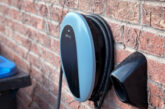
Julian Grant, General Manager at Chauvin Arnoux UK, discusses a use case for load monitoring when considering additions or alterations to an electrical installation.
When the landlord of the Magpie & Crown in Brentford was contacted by the brewery with a request to put forward a costed proposal for a major refurbishment of the pub and kitchen, he called in his friend and local contractor Chas at Tentacle Electrical to discuss what electrical works may need doing.
Upon first examination Chas discovered that the pub was being fed from a single phase 100 A supply which went on to feed three sub-distribution boards. One of these supplied the kitchen, one the general pub and bar area, and the third fed several rooms on the second floor that were rented out on long term leases.
The first clue that there might already be an issue with the suitability of the supply for the existing loads, let alone any gastronomic proposals for expansion, was the small pool of “black sticky stuff” that had obviously oozed out of the incoming supply cable at some point and collected on top of some trunking below it.
It was at this stage that Chas decided it would be necessary to see what the existing current demand was on the supply, since it had previously already got hot. He then contacted Chauvin Arnoux UK for some advice.
Power and energy logging
Once we’d considered the application a PEL103 3-phase power and energy logger was specified, complete with three flexible current sensors. Although the supply was obviously not 3-phase, the PEL103 was utilised due to its ability to also log three single-phase circuits.
Accordingly, one current sensor was connected to log the incoming supply so that we could see the total current demand, a second connected to the distribution board feeding the flats, and a third sensor on the cable supplying the distribution board feeding the kitchen.
Those three circuits were chosen on the basis that we could then see and record the total current being drawn from the supply, and the currents from the two circuits that most likely contribute the greater part of the total load.
If there was any future requirement to know the actual current consumed through the third sub-distribution board, it would be able to be calculated by taking the instantaneous current readings recorded at the incoming supply and subtracting the corresponding currents from the other two boards.
Returning after 24 days of continuous logging, the PEL103 was disconnected from the installation and the data from the SD card analysed on a PC using the included PEL software.
The maximum current drawn from the supply during the logging period was 126.6 A which occurred at 20:16:40 on 10th March 2023. While this event only spanned a period of a few seconds, there were several other times where the current drawn exceeded 100 A. On one particular evening the current could be seen to exceed 100 A for approximately four hours.
The kitchen sub-distribution board saw a maximum current of 83.57 A recorded at 13:38:41 on 5th March 2023, however this event only occurred once, and then only spanned a few seconds, with the current draw from this area generally not exceeding 50 A.
The board feeding the upstairs rooms saw a maximum current of 101.3 A which occurred at 20:44:32 on 1st March 2023, with similarly high currents being drawn around the same time every evening as the tenants returned to their rooms.
By zooming into the graphs, we could see these currents regularly switching on and off, a typical waveform signature for thermostatically controlled heating devices. This was corroborated by a reduced THD reading at the times where the resistive heating loads were on due to the high harmonics caused by low power non-linear loads, PCs, IT, LEL lights, etc. being dwarfed by the larger linear currents drawn by heating elements.
The results and graphs were converted to a report and presented to the Magpie & Crown landlord with Chas concluding that the existing 100 A supply would be adequate for the pub with headroom for some change and/or expansion of use.
However, the additional load due to the rented rooms above the pub was regularly causing the supply to be overloaded (unsurprising perhaps on the basis it was originally intend for single occupancy), and so either the flats needed to go, or the supply uprated to cope with them and any expansion of the pub. None of this detailed information would have been available without logging!
Get more details on the Chauvin Arnoux PEL103 Power-Energy Logger here











